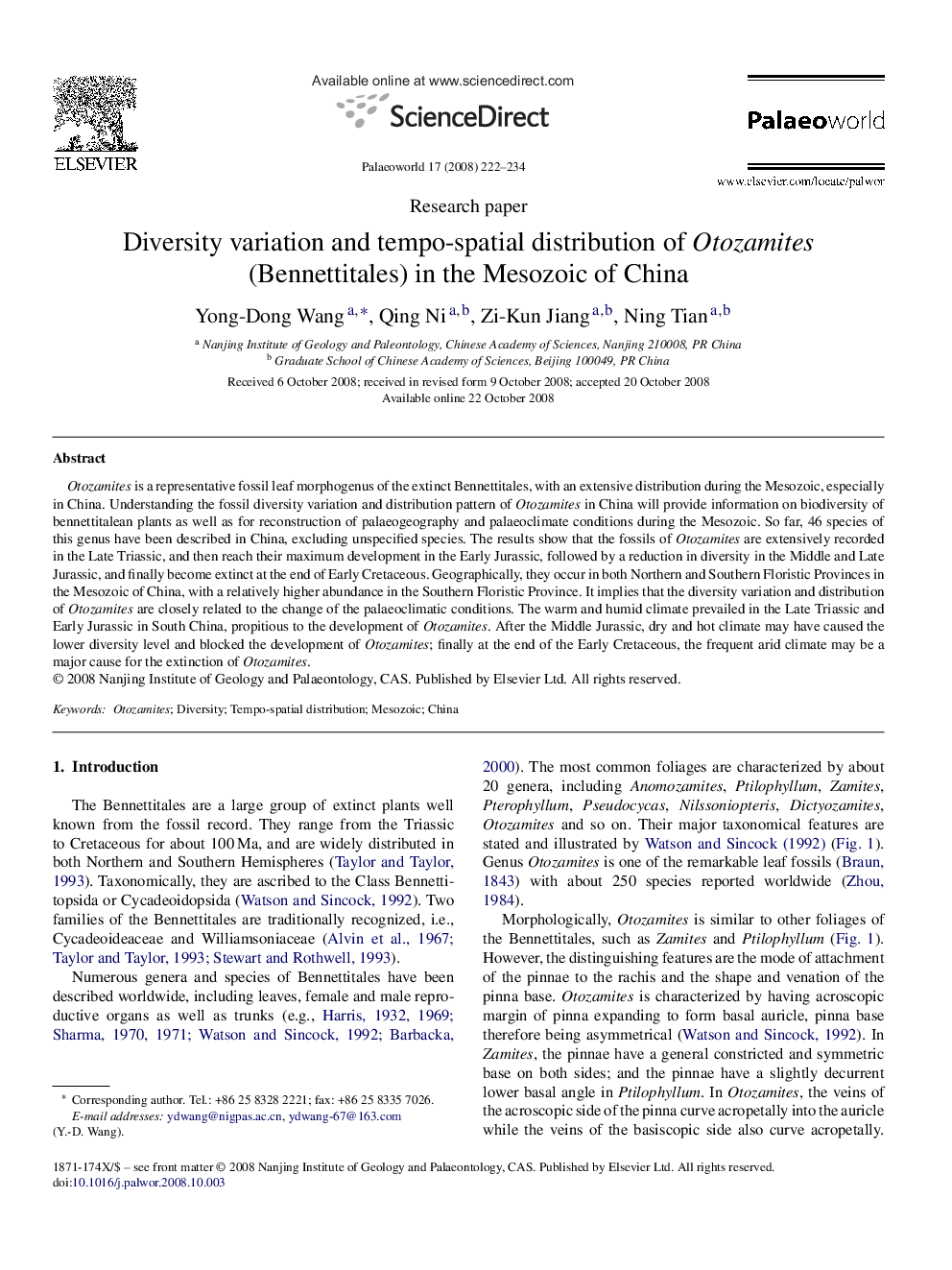| Article ID | Journal | Published Year | Pages | File Type |
|---|---|---|---|---|
| 4749957 | Palaeoworld | 2008 | 13 Pages |
Otozamites is a representative fossil leaf morphogenus of the extinct Bennettitales, with an extensive distribution during the Mesozoic, especially in China. Understanding the fossil diversity variation and distribution pattern of Otozamites in China will provide information on biodiversity of bennettitalean plants as well as for reconstruction of palaeogeography and palaeoclimate conditions during the Mesozoic. So far, 46 species of this genus have been described in China, excluding unspecified species. The results show that the fossils of Otozamites are extensively recorded in the Late Triassic, and then reach their maximum development in the Early Jurassic, followed by a reduction in diversity in the Middle and Late Jurassic, and finally become extinct at the end of Early Cretaceous. Geographically, they occur in both Northern and Southern Floristic Provinces in the Mesozoic of China, with a relatively higher abundance in the Southern Floristic Province. It implies that the diversity variation and distribution of Otozamites are closely related to the change of the palaeoclimatic conditions. The warm and humid climate prevailed in the Late Triassic and Early Jurassic in South China, propitious to the development of Otozamites. After the Middle Jurassic, dry and hot climate may have caused the lower diversity level and blocked the development of Otozamites; finally at the end of the Early Cretaceous, the frequent arid climate may be a major cause for the extinction of Otozamites.
